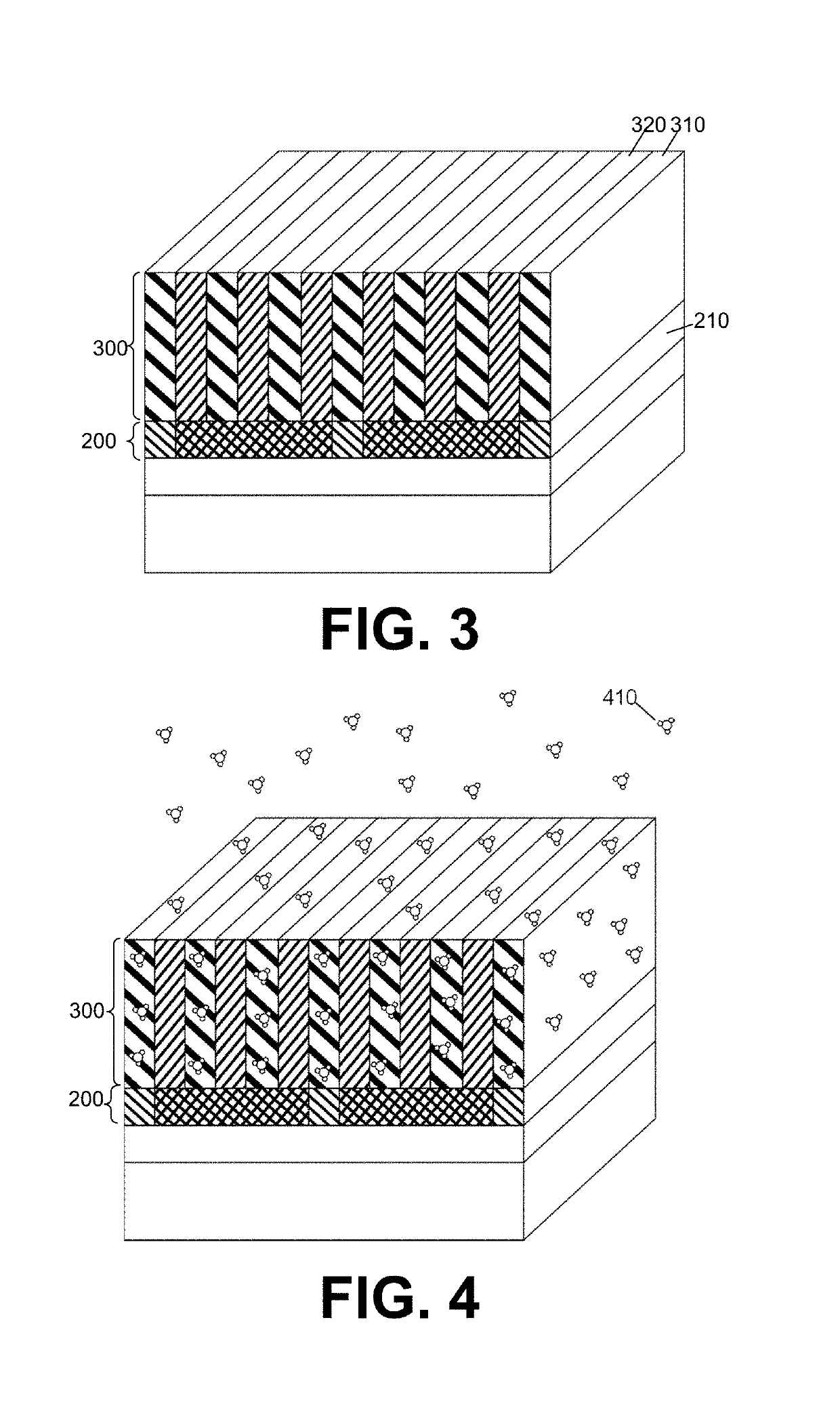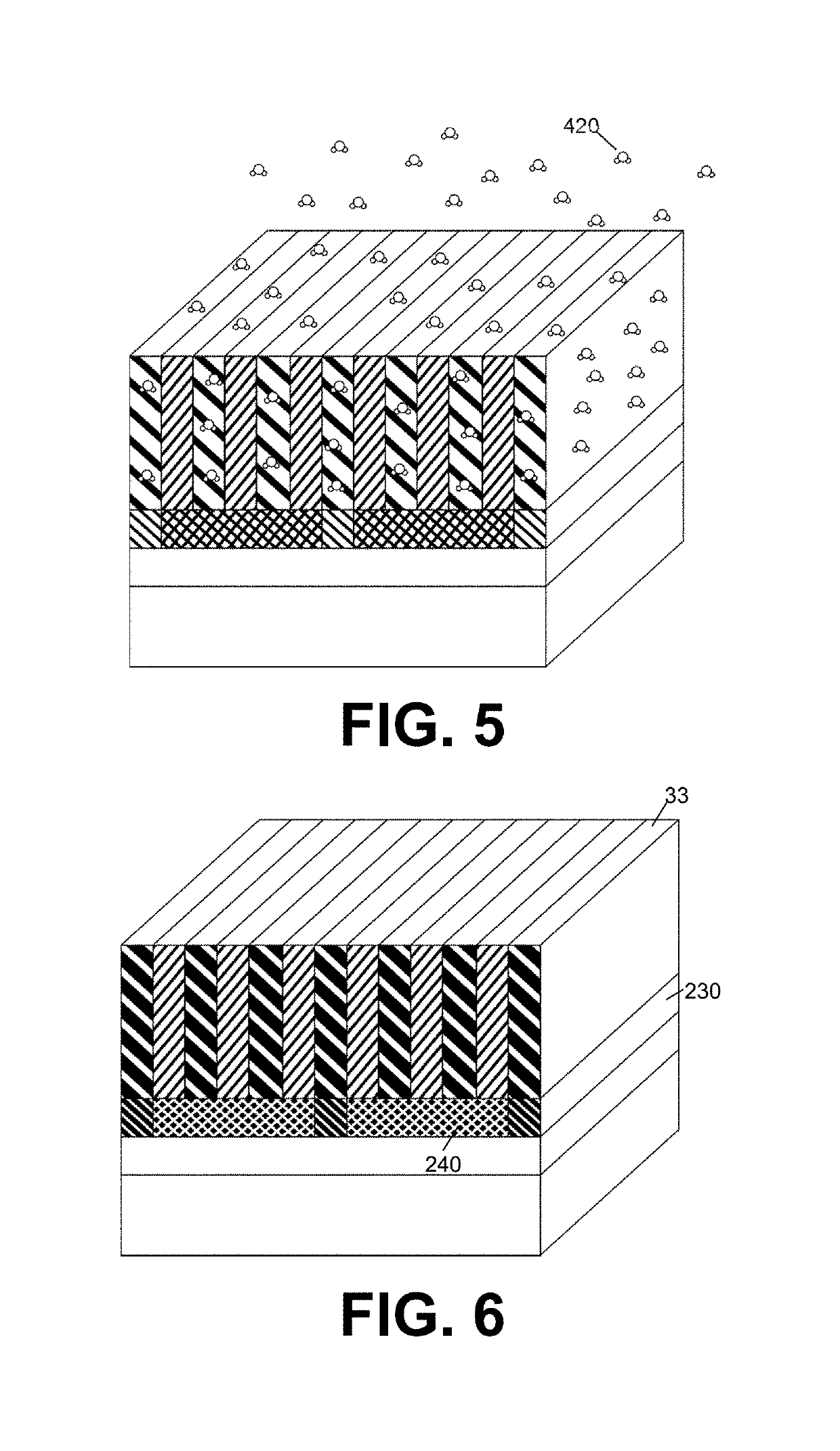Metal of ceramic material hardened pattern
a technology of ceramic materials and hardened patterns, applied in the field of patterned structures, can solve the problems of not meeting the dsa patterned block copolymer lines
- Summary
- Abstract
- Description
- Claims
- Application Information
AI Technical Summary
Benefits of technology
Problems solved by technology
Method used
Image
Examples
example 1
Fabricating and Using a Patterned Structure According to the Present Disclosure
[0117]A patterned structure according to an embodiment of the present disclosure was made and used in patterning the substrate (100).
[0118]We now refer to FIG. 1. A substrate (100) was provided, comprising a Si wafer (110) and a spin-on-glass (SOG) hardmask (120) thereon. Lines of cross linkable PMMA (X-PMMA) guiding material (210) were lithographically fabricated onto this hardmask (120).
[0119]We now refer to FIG. 2. The gaps between the lines of X-PMMA guiding material (210) were filled with a PS-r-PMMA filler material (220) and subsequently annealed, completing the first layer (200). The thickness of the PS-r-PMMA filler material (220) was largely determined by its molecular weight, which was tuned to match the thickness of the X-PMMA guiding material (210), thus obtaining a first layer (200) with a planar surface.
[0120]We now refer to FIG. 3. A PS-b-PMMA block copolymer second layer (300) was self-ass...
example 2
Comparison Between the Hardened Pattern of the Conventional Method and the Present Disclosure
[0126]The steps in making the patterned structure according to embodiments of the present disclosure (part b of FIGS. 9 to 12) will be compared to a conventional method (part a of FIGS. 9 to 12).
[0127]We now refer to FIG. 9. We start from a structure comprising a substrate (100) with a hardmask layer (120), a first layer (200) with zones of guiding material (250, 210) in a matrix of filler material (220) and a second layer (300) comprising a pattern of a first material (310) in a matrix of a further material (320). The second layer (300) may for example comprise a self-assembled PS-b-PMMA block copolymer, comprising sections of PMMA first material (310) and sections of PS further material (320). The structure of the present disclosure differs at this point from a structure prepared by a convention method in the nature of the guiding material (250, 210): in conventional methods (FIG. 9, part ...
PUM
| Property | Measurement | Unit |
|---|---|---|
| volume fraction | aaaaa | aaaaa |
| wetting affinity | aaaaa | aaaaa |
| edge roughness | aaaaa | aaaaa |
Abstract
Description
Claims
Application Information
 Login to View More
Login to View More - R&D
- Intellectual Property
- Life Sciences
- Materials
- Tech Scout
- Unparalleled Data Quality
- Higher Quality Content
- 60% Fewer Hallucinations
Browse by: Latest US Patents, China's latest patents, Technical Efficacy Thesaurus, Application Domain, Technology Topic, Popular Technical Reports.
© 2025 PatSnap. All rights reserved.Legal|Privacy policy|Modern Slavery Act Transparency Statement|Sitemap|About US| Contact US: help@patsnap.com



